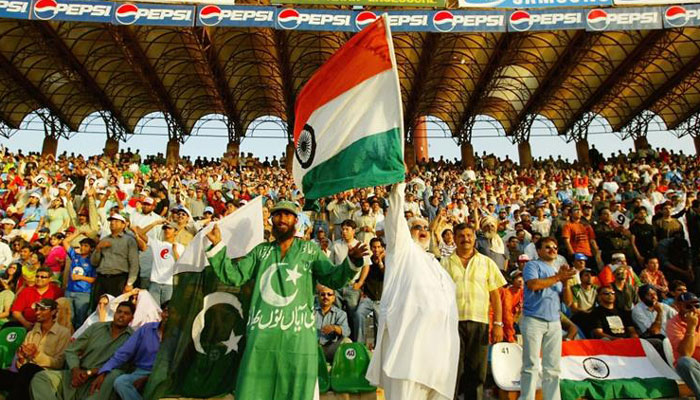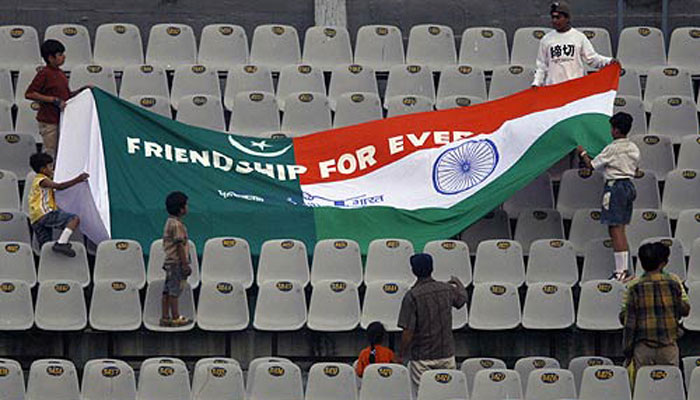June 03, 2017
When I travelled to Pakistan close to 13 years ago, there was a lot of apprehension in my mind.
I had just recently become friends with a few journalists from Pakistan and there was a sense of expectation when I was travelling there. But the apprehension was very much still there at the back of my mind.
However, minutes after I landed in Lahore, it felt like the city was just an extension of the port of my departure, New Delhi. The city seemed familiar, if nothing else much cleaner than New Delhi at some points and there was no sense of panic in my mind.
What further calmed my nerves was when I interacted with a few more Pakistani journalists, who spoke in a similar accent and in some cases shared same tastes in movies, etc. Their wives spent time watching Indian ‘dramas’ (as Pakistan refers to telly serials) and they shared similar frustrations with me of having to cede TV time to their wives.

As the India-Pakistan series got underway, there were similar stories to share, rickshaw drivers, food street owners in Lahore offering us discounts for having come from India. Similarly in other cities like Karachi, where I spent half of my only night in the city panicking because I just could not write as I suffered from a mental block, I was taken around the city by a friendly scorer at the National Stadium. I calmed myself and then carried on with my work.
Perhaps the best time in my journalistic career was spent in Islamabad and Lahore. We had unfettered access to the players, could dial up former players and share stories with taxi drivers, journalists and fans. It all seemed so normal and friendly. At the back of my mind, I always wondered, what was all the fuss about?
When my family from Mumbai called up to check on me, there was always a sense of nerves in their voices, but when I narrated the stories of my trip they just could not believe it. In Multan, I remember spending time after the Virender Sehwag blitzkrieg, with the darling of that tour Lakshmipathy Balaji and a fellow journalist. We went to a nearby DVD store and spent almost close to two hours going through DVDs that we needed to buy. Multan was obviously filled with stories about our other heroes, film stars namely Dilip Kumar, Raj Kapoor and Shah Rukh Khan.
Islamabad was the modern, planned city which transported you to the West. Lahore was the real subcontinental beauty with a charm of its own, while Karachi was just like my own Mumbai, always busy and bustling.
Meeting everyone from Majid Khan in his fortified PTV office in Islamabad to Abdul Qadir at his academy behind Gaddafi Stadium in Lahore and Aamir Sohail at his villa in Defence area in the same city, there were a number of firsts for me.
I spent a lot of time observing, talking to greats of the game and also interviewing a few of the current Pakistan players. It was my first big assignment and nothing has come close to that trip. Not even my return trip via the Wagah border in 2006. It took me about 45 minutes to arrange for a media accreditation pass, thanks to a journalist friend who ensured that I spent a holiday trip, working!
When you sit with Pakistani journalists, former and current players, you realise this annual war-like hysteria that is built up annually is just so lame.

There is no war minus shooting, it is just plain cricket. Players do not suddenly turn up to play against each other with swords or guns, it is just the same. It is just the surround sound that makes it impossible for you to breathe at times. It is quite unnecessary at times and unwarranted.
If we have to lower to the temperature then it has to become less of an event, more of a cricket contest. That sadly does not look like happening anytime soon.
We have had times in our cricketing history in the mid-1980s and from 2004-2008 when there was no edge to the contests because they happened regularly. It also helped lower the temperatures overall.
Now we are all set for the next round of hysterical build-up to just another Indo-Pak contest at an ICC event. The hyperbole on television and now social media will just go up another level. It is sickening at times to see cricketers being used as pawns for the benefit of eyeballs, but that’s how it is in these times.
When the last ball is bowled on June 4, life will continue and so will cricket. The sun will surely rise on June 5; if anything, because the match is in United Kingdom, the sun will set later than normal around the rest of the globe.
This whipping up of frenzy must stop and that can only happen with regular contests. For a generation of Indian cricket fans, Pakistan’s last superstars were Shoaib Akhtar and Shahid Afridi. It has been nearly two years now since Afridi left the ODI scene and six since Akhtar quit the sport. It is that big a gap that we need to fill.
Hopefully that gap can be filled soon, or else a generation of fans on either side will miss out on battles on the field and will just be served up make-believe contests on the telly.
Chandresh Narayanan is ex-cricket writer for Times of India, Indian Express, ex-Media Officer for ICC, author of World Cup Heroes, Cricket Editorial consultant, professor and cricket TV commentator